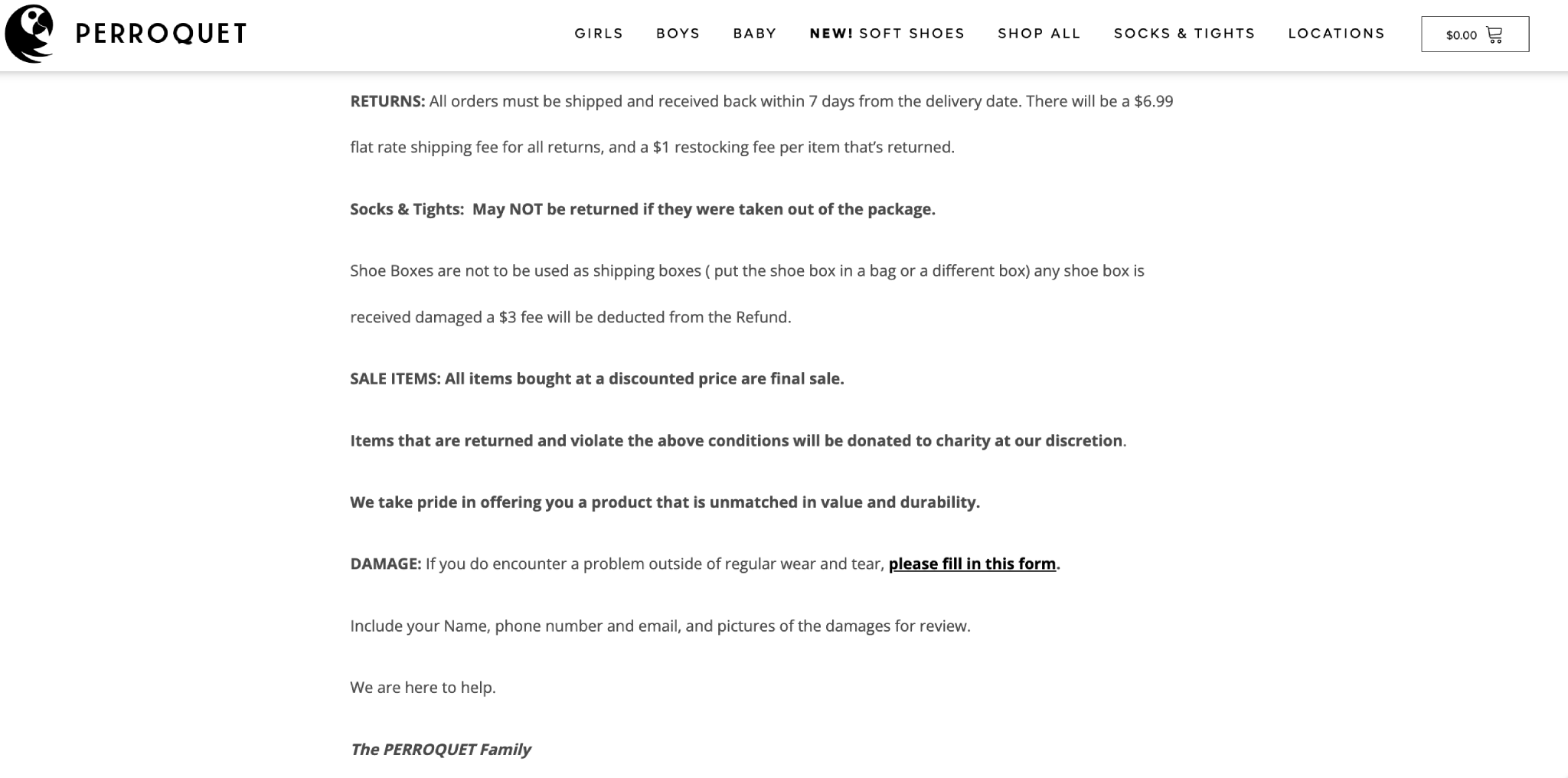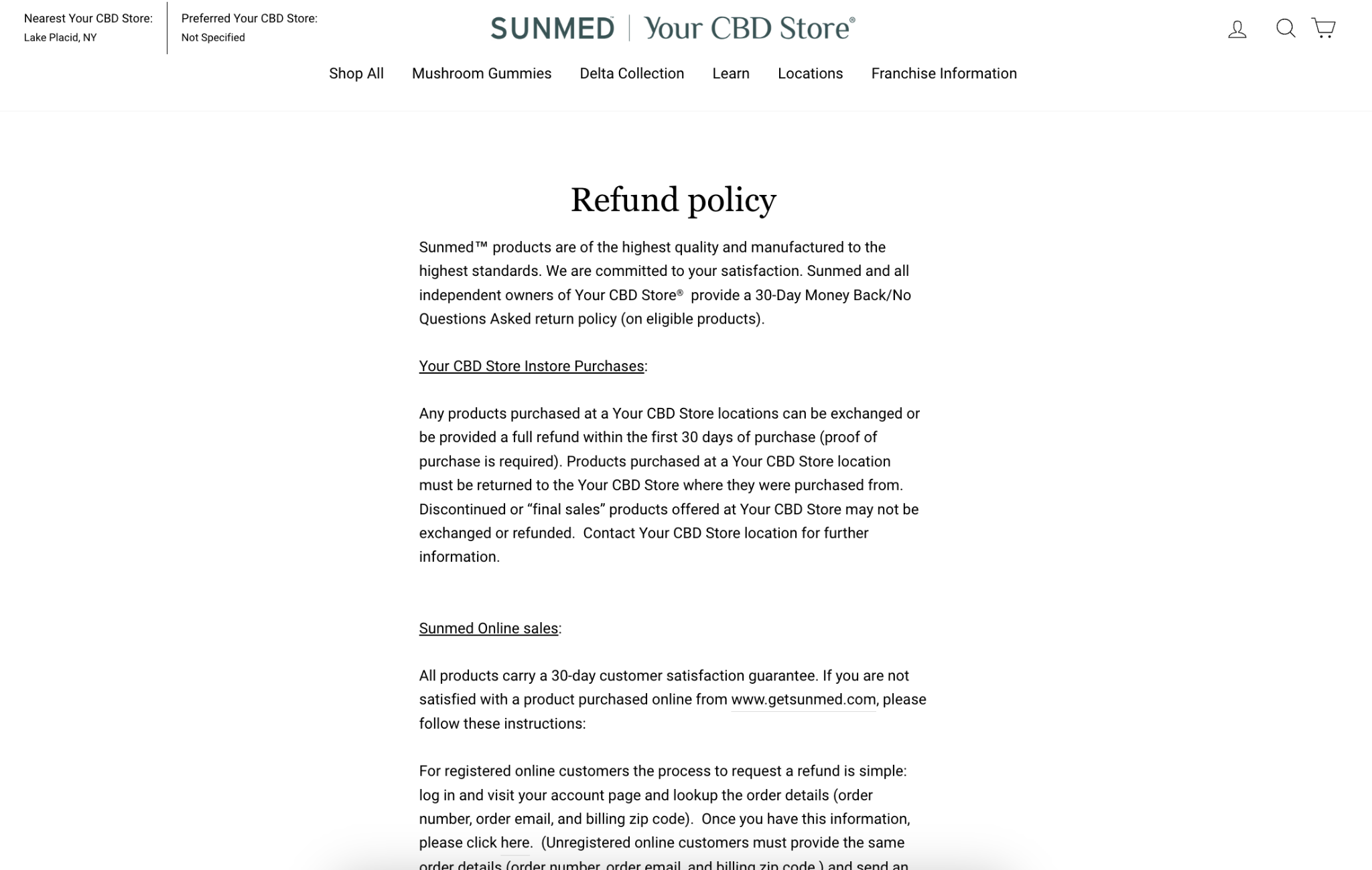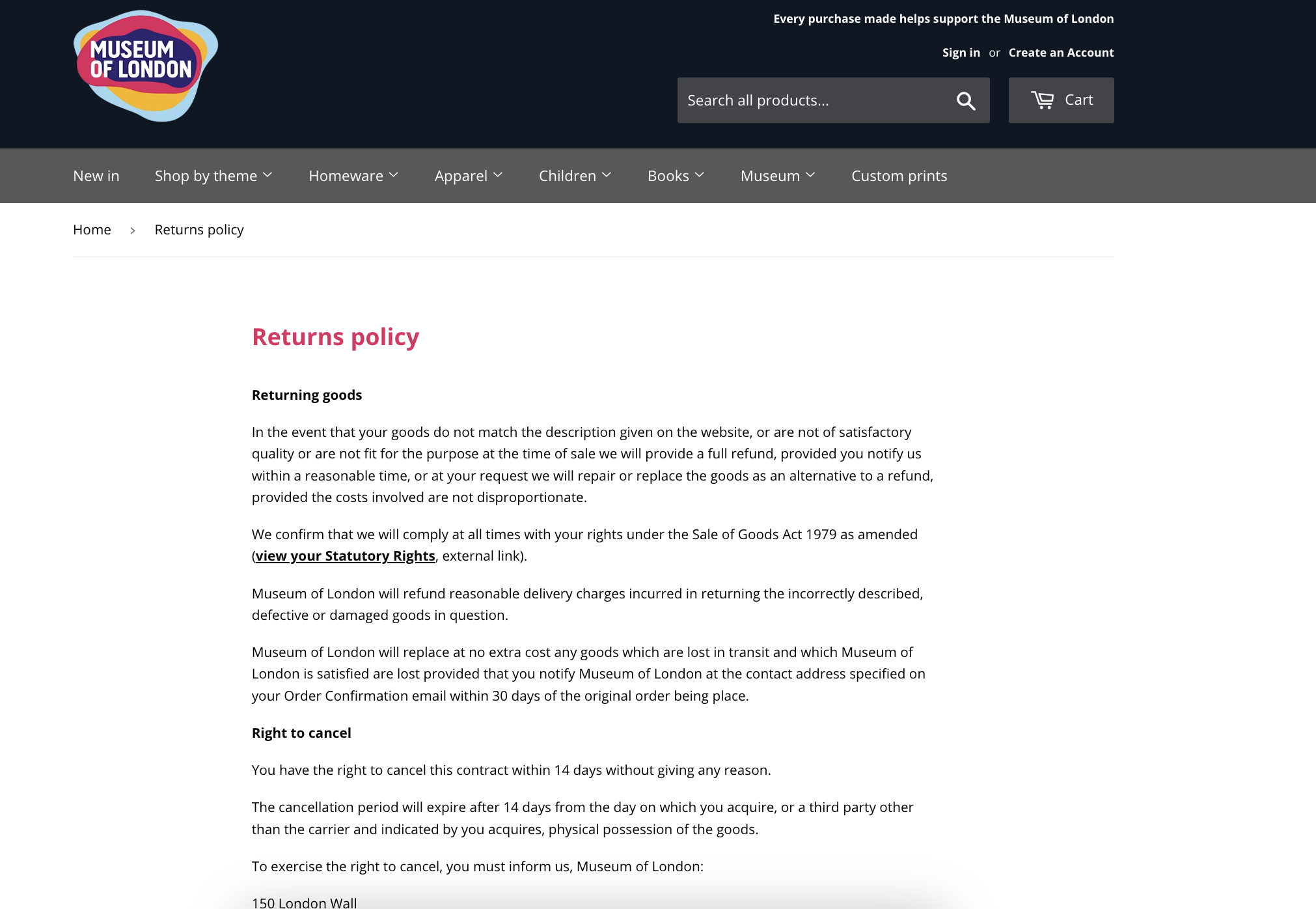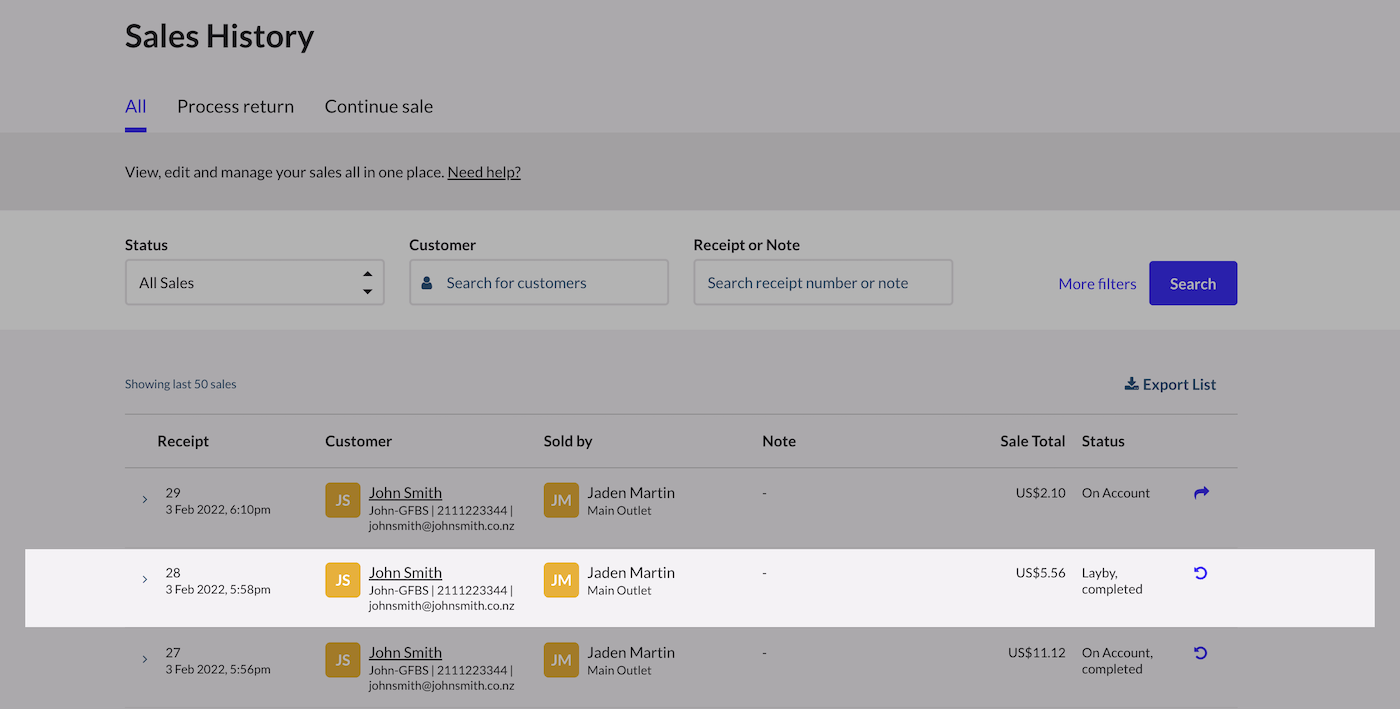
While we (rightfully) associate the holidays with a surge in sales, retailers also need to prepare for the influx of post-holiday gift returns and exchanges with a customer-focused return policy.
Approximately two-thirds of holiday shoppers made at least one return or exchange in previous holiday seasons. While you might be thinking to yourself, “that’s a lost sale,” returns aren’t bad for business.
In this post, we’ll go over:
- What a return policy is (and how to write one)
- Why your return policy needs to focus on customer needs
- Return policy examples
- 5 tips for efficient returns and exchanges
- 5 tips for smoother post-holiday returns
Shopping for a new POS system?
Improve your search with our free POS Buyer's Guide. Discover how to plan your store’s growth and choose a POS system that can support your business now and in the future.
What is a return policy?
A return policy is a set of rules that merchants establish to manage how customers return or exchange unwanted or defective products that they’ve previously purchased or received as a gift.
Return policies balance two competing needs. The first is a retailer’s revenue—you don’t want to have to pay sales associates to sell one item twice, especially if that item needs refurbishment. In this sense, it’s in a retailer’s best interest to be strict about returns.
But return policies are also considered an extension of the customer service that a merchant provides. If a return policy is too restrictive, especially around the holidays, customers may decide to go somewhere else. In this sense, it’s in a retailer’s best interest to be as open with returns as possible.
You can write a return policy that satisfies both these needs–the best ones are customer-centric and flexible to each case’s unique circumstances, while still protecting retailers from fraudulent returns.
How to write a return policy
Each retailer’s return policy should be unique to their business and the products they sell, but there are several things that a return policy should include to ensure that it’s clear and easy for customers to understand:
- The number of days or deadline to return the product.
- The type of refund they will receive (store credit, exchange, full refund).
- The information they need to bring in-store or send online for the refund (receipts, credit card, etc).
- Conditions the product must be in to be valid for return.
- Where to return the product, including if products bought in one location can be returned in another.
- How to return products purchased through ecommerce and who will pay for the shipping.
The importance of a customer-focused return policy
If you train sales associates to use the same positive, customer-focused service as they did at the initial sale, in-store returns and exchanges are a golden opportunity for your business to build a relationship with that customer, gather valuable feedback and suggest alternative products.
If you don’t, well, 64% of shoppers who have a negative experience when returning or exchanging a product say they’d be hesitant to visit the store again.
Having a positive outlook when it comes to returns and exchanges is a must if you want to increase your customer retention rate and get more repeat customers.
Return policy examples
Here are three examples you can keep in mind when considering how to write your refund policy:
- Perroquet Shoes, with a return policy that’s short and to the point so customers can quickly glean what’s important
- Sunmed, with a return policy focused on quality assurance and resolving potential confusion
- Museum of London Shop, with a return policy focused on the legal rights and responsibilities of the retailer and customer
Perroquet Shoes

Perroquet Shoes is a New Jersey-based shoe retailer that sells shoes online, through wholesale and in their flagship location. They also sell shoes seasonally around the world in pop-ups and through other retailers. Their return policy primarily addresses ecommerce shoppers.
While their return policy looks short and sweet, it’s very actionable. In it, we see:
- A time limit for returns: customers have seven days after delivery to return items. This gives them a chance to try on the shoes, but doesn’t leave enough leeway for customers to wear the shoes and then perform a fraudulent return.
- Shipping fees for returns: Perroquet clearly communicates flat shipping and restocking fees so customers aren’t caught off guard.
- Return limits: there are two conditions in which Perroquet won’t take returns—used socks and tights, and sale items. These are reasonable limits, and aren’t so lengthy that customers will get confused on what products do or do not qualify.
- Packaging instructions: as Perroquet does not want returns that could be resold to be damaged in shipping, they give customers a financial incentive (saving that $3) to send products back in a sturdier box. The fee is not so high as to be punishing, but high enough that most customers will try to avoid having to pay it.
- A way to get help with damage: to signal that they stand behind their products, Perroquet ends their return policy with a separate form for customers who want to return items due to damage.
Sunmed

Sunmed is a wellness retailer specializing in CBD, with franchised Your CBD Store locations across the United States. They also sell online. Their return policy addresses both in-store and online shoppers.
In their policy, we see:
- A strong opener: as customers are buying products that may impact their health, Sunmed opening their return policy with a quality assurance and reassurance that their return policy is no questions asked is a good trust signal.
- A time limit: Sunmed makes it immediately clear that customers have 30 days to return products. As their physical stores are run by franchisees, the clarity that the policy applies across the business is helpful.
- Instructions for in-store purchases: returns for in-store purchases must be returned to the store they were bought from, with proof of purchase. This policy helps keep franchise inventory in order.
- Instructions for ecommerce purchases: online purchases have their own instructions. Sunmed walks customers through what they need to look up their order and request a return so there’s less stress during the process.
- A shipping fee policy: Sunmed has decided to include shipping fees in their refunds, which is an extra perk customers love.
- Return limits: discontinued and final sale items cannot be returned. This is repeated throughout the policy for maximum clarity.
- Customer support instructions: the return policy ends with contact information for Sunmed’s customer support teams. Like with Perroquet’s policy, this ending signals to customers that Sunmed stands behind their products and wants to make things right with customers.
Museum of London Shop

The Museum of London is dedicated to the history of London, UK. The Museum’s shop operates on location and online, with merchandise themed around the museum’s exhibits.
The Museum’s returns policy is written much more like a legal contract than Perroquet Shoes’ or Sunmed’s. In it, we see:
- Return conditions: the policy starts by laying out when customers can return products, but doesn’t specify a time frame right away. This gives the Museum room to be flexible beyond their legal obligations.
- Exchanges vs refunds: the Museum of London Shop makes it clear that a refund is the default, and an exchange has to be requested. This both accurately sets expectations for what will happen and alerts customers to the fact that they can request an exchange instead.
- References to the law: under British law, the Museum of London Shop has set responsibilities, and a customer must perform set actions to have their requests honored. This return policy is very clear about these laws, which serves to make the Museum of London Shop look more authoritative, and makes sure customers who may not be from the UK understand their rights.
- A delivery fee policy: the return policy states when customers will receive a refund on their shipping fees, while again leaving the threshold as “reasonable” instead of setting a price. This means they can be flexible.
- A lost package policy: the policy explicitly calls out that they will replace packages lost in the mail, which is an extra bit of security for customers.
- An example cancellation form: to make cancellations of sales go smoothly, the Museum of London Shop includes a sample form at the end of the policy.
5 tips for efficient returns and exchanges
Not all retailers handle returns and exchanges the same way, but there is definitely a right and a wrong way to treat them.
That’s why we reached out to retail consultants to outline what makes a great return and exchange process. Here’s what they had to say:
- Make it simple
- Use the right retail technology
- Treat returns and exchanges as a sales opportunity
- Build in some wiggle room
- Collect (and use) product return data
1. Make it simple
Retailers need to make their process for returns and exchanges as frictionless as possible; the less steps, the better.
According to Baron Christopher Hanson, lead consultant and owner of RedBaronUSA, retailers should aim for returns and exchanges to take no more than three steps.
“From the time that a customer walks in the store to when the sales associate processes their return in the POS system, returns and exchanges shouldn’t be an exhaustive process,” he says.
Part of making your returns process as frictionless as possible is implementing the right tech to help you out.
2. Use the right technology
Finding a POS system that’s user-friendly and can process returns quickly will go a long way when you have a lineup of customers arriving at your store.
With Lightspeed, retailers can process returns, refunds and exchanges quickly through the Sales History tab.

It just takes a few clicks to issue a refund, lessening the friction of the situation and as such potentially making customers happier.
3. Treat returns and exchanges as a sales opportunity
Some retailers regard returns as a necessary evil of doing business, but the truth is that returns are an opportunity to create new customers—this is especially true during the holidays, where the purchaser and the returner aren’t necessarily the same person. A return can literally bring a new customer to your doors.
This is an opportunity to wow them with your customer service and leave a positive first impression. Maybe they weren’t a fan of what they were initially gifted, but with your sales associate’s help, they may find something they fancy.
According to Hanson, “the idea is to try and upsell each return into an exchange, a store credit, or some other attractive transaction that helps your overall sales numbers.” While some customers will only want to return their gifts and nothing else, make sure you “get them in and out as fast as you can, so your associates can tend to actual patrons worth wooing as new customers.”
4. Build in some wiggle room
When writing your return policy, you’ll probably want to set a specific time frame for returns—the standards are 7, 14 or 30 days.
But sometimes, customers will want to return an item after your cutoff point. Instead of turning them away, give sales associates the power to be flexible and accept late returns at their discretion… as long as it doesn’t involve refunding their initial payment method. Try store credit instead.
In Lightspeed, if the shopper requesting a refund has a customer profile, your sales associates can issue store credit instead of refunding them. This gives your business flexibility to offer refunds outside of your explicit return window, especially as shoppers then have an incentive to come back.
5. Collect (and use) product return data
Whenever a customer returns a product, sales associates should ask questions that help you understand why they wanted to return the product in the first place.
Hanson’s tip is to “have your sales associates ask a few questions that help you understand why they are returning the product.” That can be as simple as including a short survey in your return confirmation email that asks questions like this:
Why are you returning this product?
- Wrong size
- Didn’t like the style
- Changed my mind
- Other
Another benefit of gathering data around returns and exchanges is that retailers can get a better idea of which products aren’t living up to their customers’ expectations.
Sean Clancy, SEO Director of Edge Marketing, says that “retailers need to look at their returned and exchanged product data from previous years and identify particular products or categories with above-average return rates. This will help them with their inventory purchasing.”
If the retailer is producing its own products, then return and exchange data can help them fine-tune their products.
5 tips for smoother post-holiday returns
Sometimes, your regular return policy just won’t cut it during the holiday season. Here are five things retailers can do to have a customer-focused holiday returns policy:
- Extend your deadline for returns and exchanges
- Inform your customers about your new policy
- Set up a dedicated area for returns and exchanges
- Keep your returned items organized
- Schedule enough staff to support the rush
1. Extend your deadline for returns and exchanges
Because of the high volume of purchases made leading up to the holidays, retailers should extend their return policy until the end of January.
Whether the gift was purchased in early Novem ber or at the last minute, the person receiving the gift should have a long enough window to return or exchange their gift.
2. Inform your customers about your policy
If you change your usual return policy for the holidays, customers need to know about it. John Moss, CEO of English Blinds knows this all too well. “If you’re offering a longer period for returns than normal, if a gift receipt can only be used for an exchange or store credit rather than a refund, or even if your policy is exactly the same as normal; make sure every shopper knows.”
But how do you let customers know about your holiday return policy?
Moss suggests having large signs at the point of purchase, printing the return policy on the back of receipts and having sales associates inform each customer of the store return policy at checkout.
For online stores, Moss suggests featuring your return policy on your FAQ page, on the checkout page and on shipment invoices and email order confirmations.
For example, Allbirds dedicates a section of their website to the different types of returns and exchanges during the holiday season, which helps customers easily figure out what to do without needing to call support.

3. Set up a dedicated area for returns and exchanges
To process returns and exchanges as quickly and efficiently as possible, Hanson suggests scheduling a sales associate, equipped with a mobile POS system, to exclusively handle them.
This helps retailers maintain efficient customer service while reducing lineups to pay for, return or exchange products.
4. Keep returned items organized
While processing returns and exchanges are important, according to Moss, it’s equally important to keep returned items organized so that sales associates know what to do with them afterward.
“Simply throwing all returned items into a cart or behind the counter for expediency’s sake takes up tons of time later on. Have dedicated bins so that employees can categorize defective items, items with tags that are ready to go right back onto the shop floor, and so on.”
Having a system for organizing returned items will make your post-returns process much faster. Whether an item can go back on the sales floor, needs a tag or be shipped back to the supplier because it was defective, you’ll be happy everything is organized from the start.
5. Staff up for the rush
Offering the best customer service, whether you’re making a sale or handling a return, is key for keeping all your customers happy.
To do that, you need enough staff (and the right tech) to support each customer quickly and effectively.
According to Moss, “understaffing is perhaps the worst issue when it comes to managing seasonal returns, when you factor in how busy stores are with both sales shoppers and those returning items purchased before the holidays.”
A great way to keep your returns process running smoothly? Authorize several sales associates to handle refunds and make sure that several are scheduled per shift.
Make the most of returns and exchanges
A flexible return policy with the right customer service can help you create and retain more customers long-term. Rather than see it as a lost sale, see it as an opportunity to build a relationship.
Approximately 90% of adult shoppers say that a convenient returns policy is important when deciding to make a purchase; it provides them with the assurance that, if they aren’t satisfied, their money isn’t lost.
A solid returns and exchange policy gives customers confidence in your business and clearly demonstrates that they’re customer-centric and care about their happiness. When retailers take care of their customers, those customers are more likely to keep coming back, refer the store to their friends and family and act as a brand ambassador.
Wish for a POS system that makes handling returns around the holidays—and everything else—go smoother? You need Lightspeed. Watch a demo and see what we’re all about.

News you care about. Tips you can use.
Everything your business needs to grow, delivered straight to your inbox.


